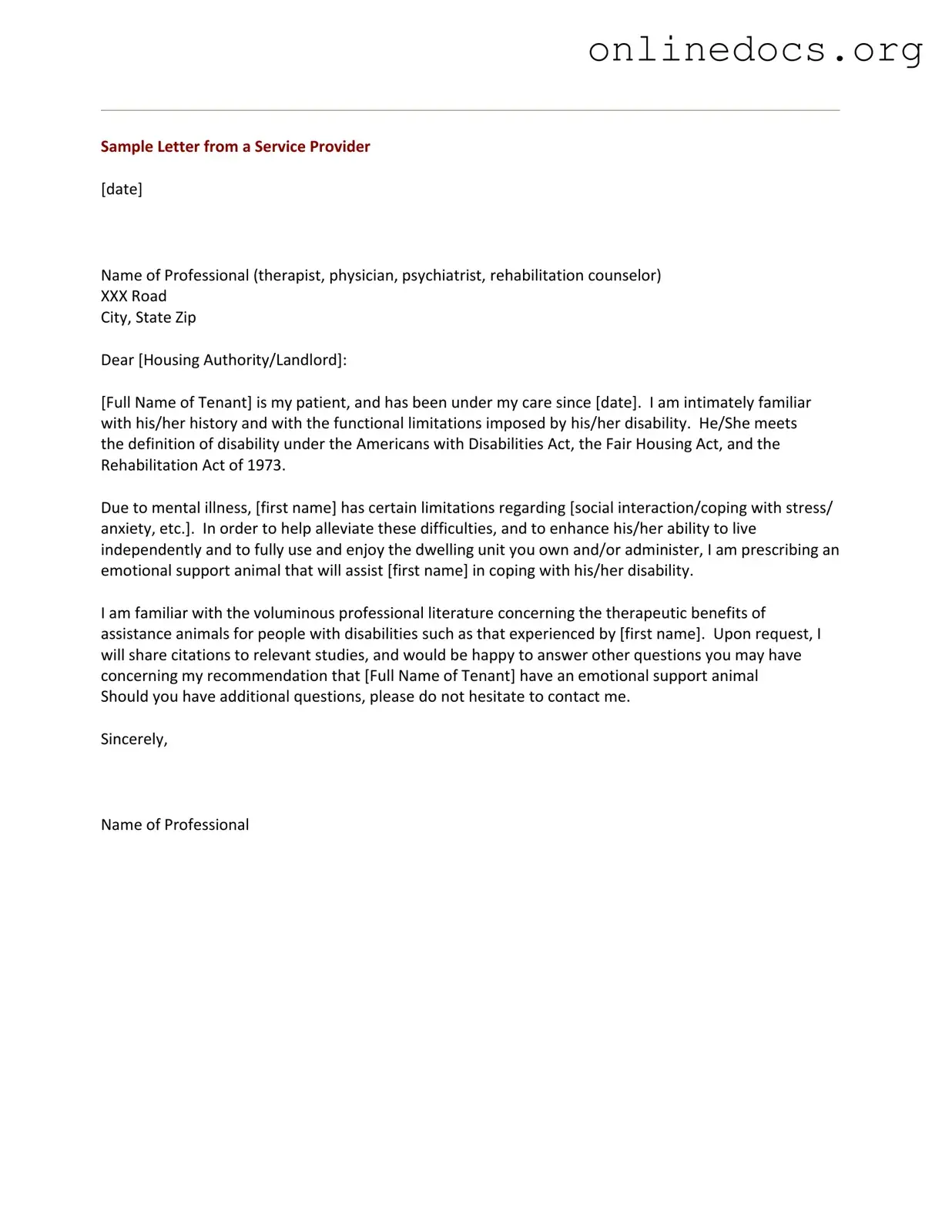The Emotional Support Animal (ESA) Letter is often compared to a Service Animal Letter. Both documents serve to provide individuals with specific needs access to certain environments. However, the key difference lies in the purpose of the animals. Service animals are trained to perform specific tasks for individuals with disabilities, while emotional support animals provide comfort and companionship. A Service Animal Letter typically outlines the tasks the animal is trained to perform, whereas an ESA Letter focuses on the emotional support the animal provides.
When engaging in the sale or purchase of a boat, it's essential to have the right paperwork in order to ensure a smooth transaction, which is where the California Boat Bill of Sale form comes into play. This form solidifies the agreement between the buyer and seller, safeguarding their interests throughout the process. For those interested in obtaining this vital document, you can visit All Templates PDF to find a template that suits your needs.
Another similar document is the Psychiatric Service Animal Letter. This letter is specifically for animals that assist individuals with psychiatric conditions. Like an ESA Letter, it is intended to help individuals manage their mental health. However, a Psychiatric Service Animal Letter emphasizes the animal's training to perform specific tasks related to the individual’s psychiatric condition. Both letters aim to support the individual, but they differ in the level of training required for the animal.
A Therapy Animal Letter is also comparable to an ESA Letter. Therapy animals are used in therapeutic settings to provide comfort and support to multiple people, such as in hospitals or schools. While an ESA Letter is personalized for an individual’s needs, a Therapy Animal Letter generally highlights the animal’s role in group settings. Both letters affirm the importance of animals in mental health, but their focus and applications differ significantly.
The Housing Letter for Emotional Support Animals shares similarities with the ESA Letter as well. This document is specifically used to request reasonable accommodations in housing situations for individuals with emotional support animals. Like the ESA Letter, it must be written by a licensed mental health professional. Both letters serve to help individuals maintain their mental health through the companionship of their animals, but the Housing Letter is specifically tailored for housing-related issues.
Lastly, a Medical Recommendation Letter can be likened to an ESA Letter. This document is often provided by a healthcare professional to recommend a specific treatment or therapy, which may include the use of an emotional support animal. Both letters underscore the importance of mental health and the need for support. However, a Medical Recommendation Letter may cover a broader range of treatments, while an ESA Letter specifically focuses on the emotional support provided by the animal.
